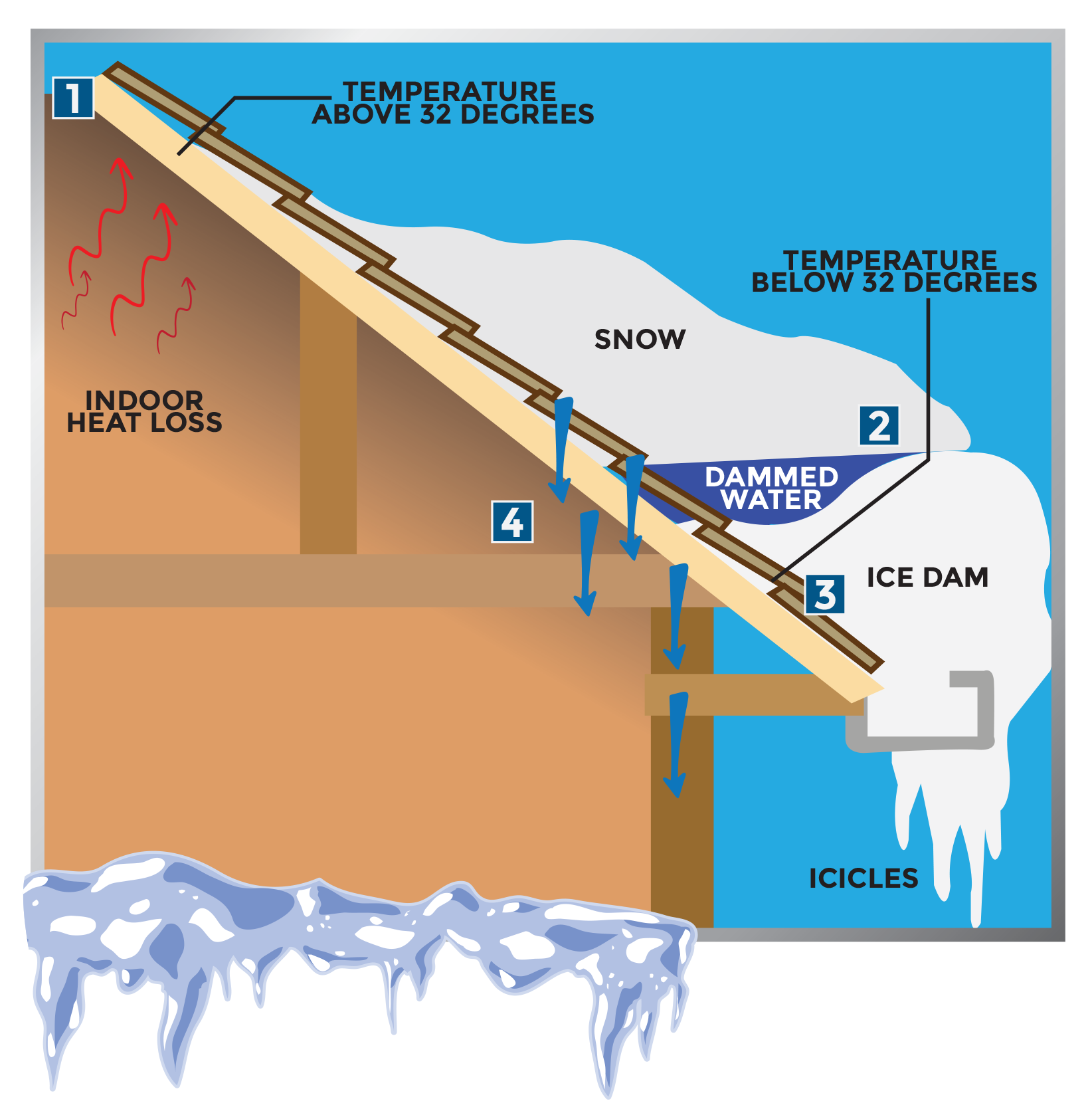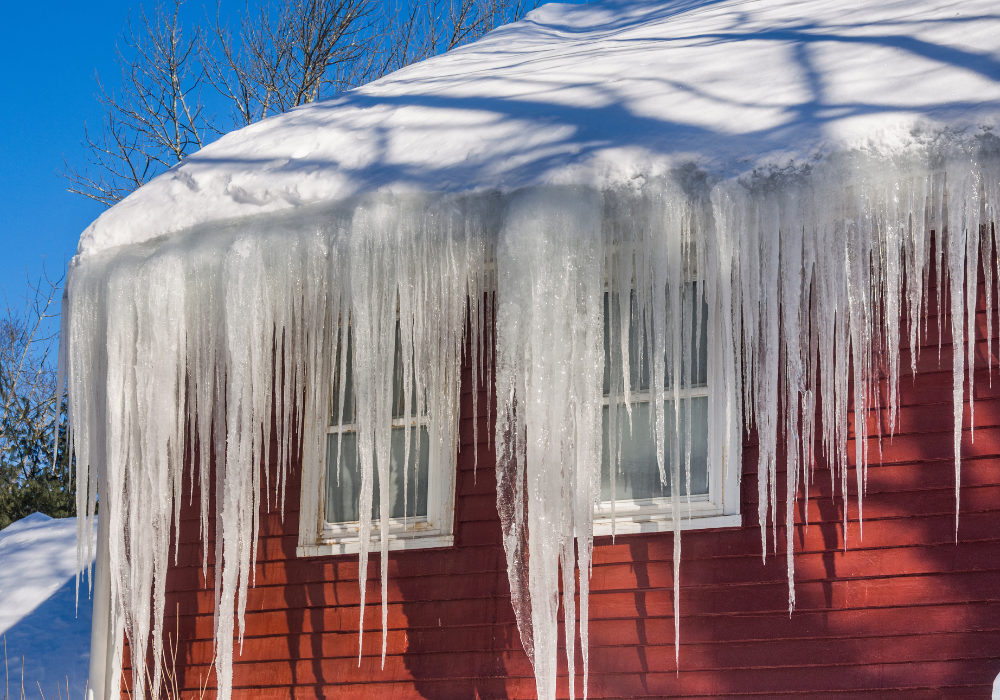Winter weather can do a number on your home, especially your roof. High winds, blizzards, and ice storms can all cause roof damage. But perhaps what you don’t think about – and should – are ice dams.
Ice dams are a common occurrence in northern, wintry climates. If there’s snow on your roof, warming temperatures during the day or heat coming through your attic could cause melting. Then when temperatures drop again at night, it refreezes as ice. This can cause an ice ridge along the eaves of your house.
Once that ice ridge forms, future snow melts are blocked from reaching the gutters. Without proper drainage, snow melt backs up and eventually could seep into your roof or overflow your gutters. So if you see picturesque icicles along the roof of your house – that’s not good.
Most obviously, ice dams can damage your roof. You may experience torn shingles, damaged gutters, or even leaky roofs. But that’s just the beginning. If moisture gets inside your house it can cause stained or saggy ceilings, peeling paint, and warped floors. It can also cause soggy insulation, which can breed mold and mildew and attract pests like insects and mice.
You can try raking it. A specially made long-handled roof rake can safely remove snow without damaging your roof. You can also use chemical ice melt, similar to what you use on your driveway. One hack is to put this in panty house and lay the hose directly across the dam to create a water channel that allows future melts to reach your gutters.
And, of course, you can always hire a professional roofing company to help sweep or rake snow from your roof, or even apply steam to rid your roof of all snow and ice.

You can prevent future ice damage to your house by taking a few simple steps. The first is to add insulation to your attic floor. This keeps the heat in the house and prevents it from rising through the attic to warm the roof.
Another good idea is to add ventilation to your soffits and along the ridge of your roof. This allows the colder winter air to circulate through your attic, keeping the temperatures on your roof in line with outside temperatures.
Basically, a cold attic means no snow melt on your roof, therefore no ice dams and no roof damage. So blocking heat sources to your attic is key.
If you have additional questions about protecting your home, home insurance, or would like to review your current property coverage, give Sea-Mountain Insurance a call. We’re happy to answer your insurance questions.
